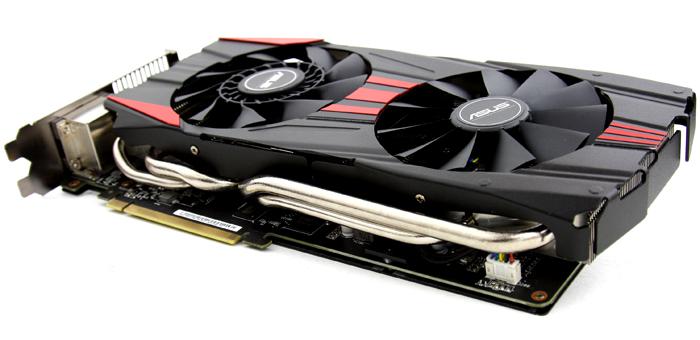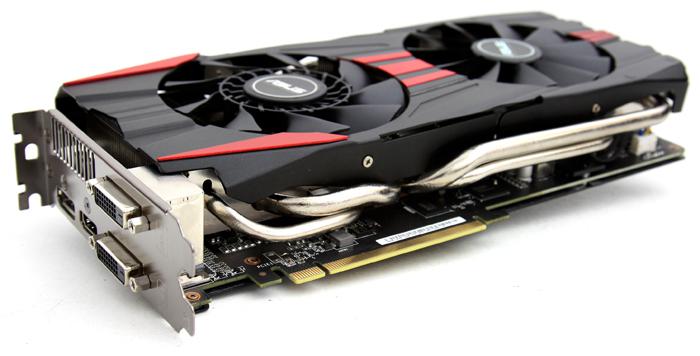Final Words & Conclusion
Final Words & Conclusion
Reviewing the 290 cards often make me wonder why one should spend a hundred bucks more on the 290X models. The performance difference surely can be measured, but really isn't that big. Especially when you tweak these cards a bit you'll get a lot of value for money alright.
I think the R9-290 DirectCU II OC edition from ASUS is gonna be a hit overall really. It offers good cooling temperatures, with a steady GPU clock as result. For a decent amount of money you'll gain a graphics card with massive rendering performance, good looks and heck, even 4GB graphics memory. And it comes factory clocked faster than reference as well, not heaps but there's plenty of tweaking bandwidth left for you. Also the card is is a good chunk cheaper (365 EUR) than a GTX 780 (435 EUR) and GTX 780 Ti (635 EUR) as well as you get more graphics memory (4GB). For the money you get to play your games at 2560x1440 and flick on every quality setting that you can think of. These cards can handle it, make no mistake.
Ultra HD gaming
For the few of you that already made the step towards UHD or 4K gaming at 3840 x 2160 we do need to warn you. The ASUS Radeon R9 290 will not be capable of that 4x FullHD resolution if you flick on all image quality settings. However, two cards in Crossfire would be truly excellent and price/performance wise this 290 just makes the most sense right now.
Cooling & Noise Levels
Where the reference cooled products are to be considered really average, the DirectCU II does make its promises worthwhile on everything. ASUS applied their latest revision of the DirectCU II cooling solution. This revision is a dual-slot solution and looks great. The PCB is customized and I can spot merely quality components, which is great. There is a metal plate at the top of the card so the card can not bend when seated horizontally in the PC, it might block and trap some residual heat from the VRM and GPU though. We measured a top stress temperature of 73 Degrees C on the card, coming from 94 Degrees C on the reference coolers that is rather sweet. Overclocked that dynamic changes fast though as, especially with a little voltage tweaking, these cards get hot fast, real fast. At defaults the card remains pretty silent. So that is, simply put, a massive improvement over the reference cards.
Power Consumption
The card is rated having a 250 Watt TDP. We measured roughly 265 Watts which is a lot, but acceptable for many of you. If you pursue the multi-GPU road then with two cards we think a 800~900 Watt PSU would be sufficient, but do keep in mind to have a bit of reserve. So yeah, it's not great to have a GPU consuming that much power, but it could have been a lot worse.
Game Performance
The AMD R9 290 in most scenarios will be performing close to the GeForce GTX 780 and Titan, that is a pretty nice sweet spot for just one GPU that comes with a nicer price-tag opposed to the competition. Performance wise there will be few games that won't run seriously good at the very best image quality settings. And you do it all with a nice 30" monitor of course, at 2560x1440/1600, that's where this card kicks azz. I mean, BioShock Infinite at Ultra quality levels is still oozing out 60 FPS there. Or what about Hitman Absolution with 65 FPS at 2560x1600 High quality and 2xMSAA? It's really nice performance. And especially for those with Ultra High Definition gaming in mind, the 290 will make sense set up in Crossfire. That would be a sweet spot and you'd have 4 GB of graphics memory per GPU.
Overclocking
Overclocking then, a thing or two has changed, the new boost modes for example. However, in the current design with normal cooling levels you can reach close to 1150 ~ 1200 MHz on the GPU. The memory can be clocked just above 5500~6000 MHz (effective). Overall that brings the card another 5 to 10% performance when compared to reference clock frequencies. It is a fairly nice tweak, also I must note that ASUS factory overclocks the card a bit to 1000 MHz on the GPU core and 5040 MHz on the memory, but that really doesn't make much of a difference performance wise.
Concluding
If you would ask me straight up what I'd prefer to purchase, the 290 or 290X, then it has to be a 290. The value for money simply is a good chunk better, and compared to the competition the card just makes a lot of sense. The ASUS Radeon R9 290 DirectCU II OC is the stuff we have been waiting for, proper cooled Hawaii GPU based products is what we all want. I mean it's a great card but the 94 Degrees C temperature target the reference cards reach is simply too much for many of you. The ASUS Radeon R9 290 DirectCU II OC however didn't even reach 75 Degrees C, and that makes all the difference. Cooling is so good that you'll have some reserves available to you to actually be able to actually overclock the card. Albeit when you voltage tweak, the temps start to jump up towards 85 Degrees C pretty fast again. But that's your choice and call to make of course. With all facts and benefits combined and explained we can only conclude that the ASUS Radeon R9 290 DirectCU II OC is a very attractive product, with its 4GB graphics memory and raw rendering performance it will surely offer you an extensive amount of gaming performance in your PC. The heat levels and noise levels are no longer a trade-off and effectively have been eliminated. That makes the card a serious contender against NVIDIA's line-up. One problem is availability though, as of the moment I was writing the article, the card was not yet available. Let's hope that'll change soon. The ASUS Radeon R9 290 DirectCU II OC edition is very much recommended by Guru3D.com
Recommended Downloads
Sign up to receive a notice when we publish a new article
Or go back to Guru3D's front page




